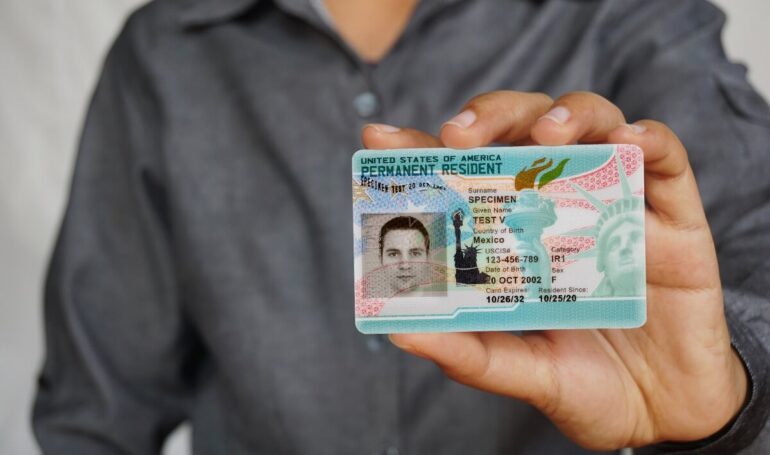
Many H-4 visa holders find themselves in a frustrating position—legally in the U.S. but unable to build careers or gain independence. As immigration pathways evolve in 2025, transitioning to an EB-3 visa has become a powerful way to break free from dependency and pursue permanent residency.
For H-4 visa holders in the US, the changeover from a dependent status to an independent status with a work visa is a prominent solution towards long-term residential and employment stability. The EB-3 visa Green Card Program is attractive to them as it presents a feasible route for professionals, skilled, and unskilled workers to secure green card residency.
This comprehensive guide will explore the transitioning process from an H-4 visa to an EB-3 visa and explain the challenges and alternatives to independence in 2025.
Now, the H-4 visa holders are dependents of H-1B workers, who are not eligible for any work opportunities without an EAD (Employment Authorization Document), which is rather tricky to obtain, subject to delays. So, the reasons why they shift to the EB-3 Green Card are:
- Qualify for permanent residency
- Independence from H-1B status
- Unrestricted work authorization
- Potential long-term employment stability
One more reason is that H-4 visa holders automatically, or often, qualify to work under professional and skilled worker categories, provided their work experience or education.
Step-by-step Breakdown of the Pathway From H-4 to EB-3 Green Card

While the process to transition from an H-4 visa to an EB-3 green card visa is complex, in the end, the outcome is quite satisfactory. Find the simplified outline of the whole process ahead:
Step 1: Secure a US employer to sponsor you
The first thing to do is to secure a prospective job role from a US employer to sponsor your EB-3 visa. In contrast to H-1B criteria, the EB-3 green card demands a permanent job offer and a PERM certification.
What you do is:
- Widen your network within the industry.
- Target US companies known for sponsoring foreign laborers.
- Search for positions specifically listed under the EB-3 Green Card Jobs, such as engineers, skilled tradespeople, IT professionals, and healthcare workers.
Step 2: Obtain PERM labor certification
Before you file an EB-3 petition, it is the responsibility of your employer to get an authorized PERM certificate from the US Department of Labor (DOL). This process involves:
- Prevailing Wage Determination (PWD) to establish that your expected salary aligns with the industry standards.
- Proof of recruitment efforts by the employer about the unavailability of qualified US workers.
- If the recruitment efforts are legitimately unsuccessful, the DOL shall approve the PERM certification.
This whole process may take around 6-12 months. So, you must be patient.
Step 3: I-140 Immigrant petition
Once you receive the PERM labor certification, your employer, on your behalf, files Form I-140, which is Immigrant Petition for Alien Worker, with the USCIS to establish your eligibility for the EB-3 visa category. This petition can be fulfilled under 15-day premium processing, subject to an additional fee.
Step 4: Wait for your priority date
EB-3 visa allocations are restricted to annual caps, creating backlogs, especially for Chinese and Indian nationals. So, until your priority date becomes current, ensure to monitor the Visa Bulletin frequently.
Step 5: Adjust status or consular processing
As and when your priority date turns current, you can proceed to:
- File Form I-485 (Status Adjustment), provided that you are in the US.
- Or, undergo consular processing, if overseas.
Once approved, you will obtain your EB-3 Green Card towards permanent US residency.
Common Challenges and How to Overcome Them

Other than the whole transition process being lengthy and complex, you will also face certain difficulties along the way:
- Employers hesitate to sponsor: Due to the costly system, most employers avoid EB-3 visa sponsorships. To tackle this, you must demonstrate your unique and capable skills and suggest ways to help with PERM recruitment.
- Prolonged processing times: The whole EB-3 processing can take as long as 2.5 years. To bypass such delays, stay informed of USCIS changes and consider concurrent filing.
- Preserving legal status during the transition period: If your H-4 status is to expire before obtaining EB-3 approval, you may switch to an F-1 visa to pursue higher education, or for the H-1B lottery, if eligible.
Alternative Plans if EB-3 is Delayed
Since the EB-3 visa process is lengthy, considering backup options is wise to preserve your legal status while waiting for transition. Below are a few alternatives:
- H-1B Visa: Since H-1B is dual-intended, with a bachelor’s degree, you qualify to enter the H-1B lottery around March-April for work authorization, with high potential to pursue a Green Card.
- L-1 Visa for intracompany transfers: If your current employer operates an office in the US, apply for an L-1 visa as a specialized worker or managerial position, leading to quicker Green Card approval via EB-1C.
- O-1 visa for extraordinary ability: If you hold recognizable achievements in the fields of arts or research, this visa, without any annual cap, allows for flexible work opportunities. However, this plan demands extensive documentation.
- H-4 EAD: If your H-1B spouse has their I-140 already approved, you are eligible for an H-4 EAD to start working until you get the EB-3 Green Card Jobs.
Financial and Legal Considerations

Transition from H-4 to EB-3 involves multiple expenses and legal complexities. Here’s what you can expect:
Cost breakdown
The total estimated cost goes around $10,000 to $20,000. Usually, the employer bears the cost, but a few might ask for a contribution. This total covers:
- PERM Labor certification – $3,000 – $6,000 (legal fees, recruitment ads, etc.)
- I-140 filing fee – $700 + $2,500 charge for premium processing
- I-485 adjustment of status – $1,140 + $85 biometric fees
- Attorney fees – $5,000 – $10,000 (variable)
Tax implications
Once you receive your EB-3 Green Card, you become a US tax resident, meaning you must report all your income sources. If you transition status mid-year, consult with a tax expert about your revised filing duties.
Employer sponsorship agreements
Some companies demand a 1-2 year mandatory job commitment post Green Card approval. So, carefully review the agreement to avoid any breach of the clauses for leaving early.
Legal risks and compliance
During the PERM/1-140 process, do not change jobs as it would risk your application. Plus, if your H-4 visa expires during that period, you must seek legal guidance to bridge visa.
Last words
Transitioning status from H-4 to EB-3 visa is a step forward to achieve permanent residency and career stability. With a prospective employer sponsor and essential processes, you can abandon your dependent status in 2025.
You can connect with an immigration lawyer for tailored advice on how to go about the EB-3 visa Green Card Program.
